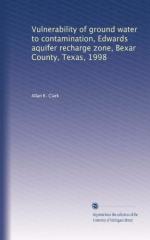|
This section contains 1,348 words (approx. 5 pages at 300 words per page) |

|
Once an aquifer is contaminated, the process of restoring the quality of water is generally time-consuming and expensive, and it is often more cost effective to locate a new source of water. For these reasons, the restoration of an aquifer is usually evaluated on the basis of these criteria: 1) the potential for additional contamination; 2) the time period over which the contamination has occurred; 3) the type of contaminant; and 4) the hydrogeology of the site. Restoration techniques fall into two major categories, in-situ methods and conventional methods of withdrawal, treatment, and disposal.
Remedies undertaken within the aquifer involve the use of chemical or biological agents which either reduce the toxicity of the contaminants or prevent them from moving any further into the aquifer, or both. One such method requires the introduction of biological cultures or chemical reactants and sealants through a series of injection wells. This action will...
|
This section contains 1,348 words (approx. 5 pages at 300 words per page) |

|


